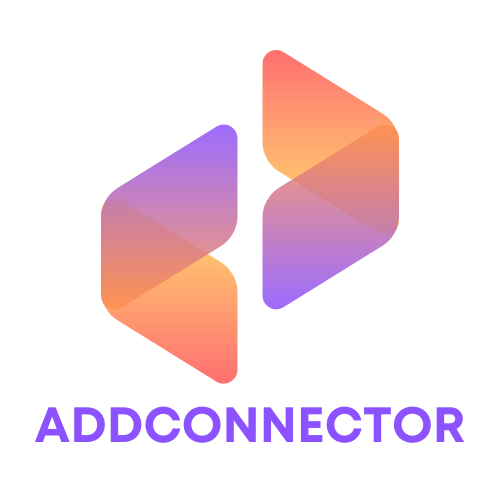In the fast-paced world of broadcasting, having the right hardware setup can make or break a production. Imagine trying to deliver a live sports event with a potato instead of a camera—yeah, not ideal. From crisp visuals to crystal-clear audio, the right equipment transforms a good broadcast into a spectacular one.
Table of Contents
ToggleOverview of Broadcast Hardware Setups
Broadcast hardware setups consist of multiple components that integrate to produce high-quality audio and video. Cameras capture images, while microphones record sound, forming the backbone of any successful broadcast. Switchers enable seamless transitions between different video feeds, ensuring a dynamic viewing experience.
In addition to cameras and microphones, encoders play a critical role in converting raw video feeds into a digital format suitable for streaming. Monitors allow producers to view the broadcast in real time, helping to maintain quality and consistency. Each piece of equipment functions together to create a polished final product.
Networking equipment, such as routers and switches, ensures efficient data transmission. Reliable internet connectivity is paramount; various setups use fiber optic cables or wireless solutions to enhance signal strength. The choice of equipment significantly impacts the reliability of the broadcast, particularly in live sports scenarios.
Lighting fixtures improve visibility and aesthetics, preventing dark or overexposed scenes. Combinations of LED lights and portable lighting solutions provide flexibility in different environments. Proper lighting complements camera work, elevating the overall quality of the visual output.
Additionally, audio mixers allow for fine-tuning sound levels and eliminating unwanted noise. This control ensures that dialogues, commentary, and ambient sounds are in harmony. Each hardware choice reflects the specific needs of the production team, impacting creativity and efficiency.
Effective setups prioritize user-friendly interfaces and durability, especially during live events. Rigorous testing of equipment ensures that everything functions smoothly under pressure. Establishing a comprehensive broadcast hardware setup leads to enhanced viewer engagement and successful productions.
Key Components of Broadcast Hardware
Broadcast hardware setups rely on various critical components that ensure smooth operations and high-quality productions. Understanding each part’s role helps streamline processes and enhances viewer experience.
Cameras
Cameras serve as the backbone of any broadcast setup, capturing visuals with precision. High-definition models are preferred for their crisp image quality and versatility. Options range from traditional camcorders to advanced digital cinema cameras. Each type offers different features, such as frame rates and sensor sizes, for specific production needs. Using cameras that accommodate various lighting conditions ensures optimal performance, especially in dynamic environments like live sports events.
Audio Equipment
Audio equipment plays a vital role in broadcasting, influencing clarity and audience engagement. Professionals often utilize shotgun microphones for focused sound capture and lavalier microphones for hands-free use by presenters or hosts. Mixing consoles are essential for balancing sound levels, preventing distortions, and enhancing audio quality. Additionally, employing wireless systems aids in mobility during live setups. Prioritizing high-quality audio gear directly impacts overall production effectiveness.
Switching and Encoding Devices
Switching and encoding devices are integral to live broadcast operations, managing input from multiple sources seamlessly. Video switchers enable real-time transitions between scenes, enhancing visual storytelling. Meanwhile, encoders convert raw footage into streamable formats, maintaining quality during transmission. Devices such as hardware encoders are preferred for reliability, especially during high-stakes broadcasts. Efficient switching and encoding workflows contribute significantly to production speeds and viewer satisfaction.
Setup Types and Configurations
Broadcast setups vary based on the environment and purpose. Understanding these configurations helps maximize efficiency and output quality.
Live Broadcast Setups
Live broadcast setups require immediate adaptability and precise coordination. These setups often include portable cameras that capture dynamic action, enabling quick movement across different angles. Portable audio systems are critical for maintaining sound clarity in ever-changing environments. Switchers play a vital role in seamlessly transitioning between various camera feeds while maintaining viewer engagement. Equipped with real-time monitoring tools, broadcast teams can make quick adjustments, ensuring quality during high-stakes events like sports games. Reliable networking equipment supports uninterrupted data transmission, essential for live streaming and audience connectivity.
Studio Broadcast Setups
Studio broadcast setups emphasize controlled environments for optimal audio and visual quality. Here, high-definition cameras provide superior image clarity and dynamic range. Fixed positions allow for precise lighting arrangements, enhancing visuals for professional presentations. Highly sensitive microphones capture nuanced audio, making dialogue crisp and clear. Production teams utilize advanced switchers and encoders to manage multiple inputs, producing polished final output. Soundproofing within the studio minimizes external noise, further refining audio quality. User-friendly interfaces streamline operations, allowing crew members to focus on creativity and content delivery.
Factors to Consider in Broadcast Hardware Choices
Selecting the right broadcast hardware involves weighing several important factors.
Budget Constraints
Budget constraints significantly impact hardware choices. Each piece of equipment, from cameras to microphones, varies in price. Setting a clear budget helps prioritize essential components over optional ones, ensuring basic needs are met. Researching different brands and models aids in finding the best quality equipment without overspending. Various financing options, like leasing equipment instead of purchasing, offer flexibility while adhering to financial limitations. Streamlining purchases by focusing only on crucial elements can enhance overall production value within budgetary confines.
Space Limitations
Space limitations pose another challenge in hardware setups. Assessing the available area dictates the size and number of equipment pieces that can fit comfortably. Larger studios often accommodate extensive setups, while smaller environments require compact, multifunctional equipment. Strategic placement enhances workflow efficiency and simplifies mobility. Considering the layout also aids in determining how different components connect and operate. Prioritizing portable and lightweight gear ensures ease of transportation and setup, making it suitable for various locations.
Technological Compatibility
Technological compatibility remains critical for seamless operation. Each equipment piece must work harmoniously with others in the setup. Checking for compatible connections prevents technical issues during broadcasts. Upgrading existing hardware should take into account the latest technology trends to ensure longevity. Emphasizing standardized connections like HDMI or SDI simplifies integration across multiple devices. Regularly consulting compatibility charts and user reviews can help identify potential problems, ensuring a smooth production process.
Conclusion
Investing in the right broadcast hardware setup is vital for achieving high-quality productions. Each component plays a significant role in enhancing audio and visual clarity, ultimately impacting viewer engagement.
Whether it’s a live sports event or a studio production, the synergy between cameras, microphones, switchers, and networking equipment ensures seamless operation. Prioritizing user-friendly interfaces and durable equipment allows production teams to focus on creativity and content delivery.
By carefully considering budget constraints, space limitations, and technological compatibility, professionals can build setups that meet their specific needs while maximizing production value. With the right tools in place, the potential for captivating broadcasts becomes limitless.



